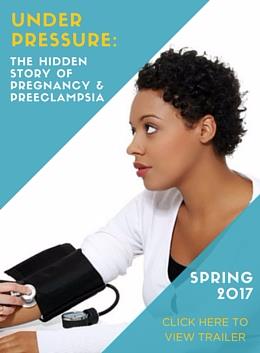When fetal DNA testing for chromosomal disorders was first introduced in 2011, many experts feared that the improved results would be oversold, leading women to take irreversible steps based on a test that, while an improvement over earlier testing, remains far from conclusive.
Both the new generation of tests and the old were performed on a blood draw from the mother; newer tests seek to analyze the fetal DNA that floats freely in the mother’s blood. At 10 weeks pregnant, when these tests are normally done, about 10 percent of the DNA in a mother’s blood will be fetal DNA from the placenta. A studypublished in The New England Journal of Medicine in February found that a fetal DNA test was 10 times better in predicting cases of Down syndrome than the standard blood test and ultrasound screening, and five times better in predicting the other disorder examined, Trisomy 18. But both new and old tests require an additional procedure, usually amniocentesis, to confirm the accuracy of the result.
“The greatest risk is that the test will be oversold or over-interpreted and that women won’t take the step of an invasive diagnostic procedure before they do something irreversible like terminate a pregnancy,” Dr. Michael Greene, director of obstetrics at Massachusetts General Hospital, told The New York Times when that study was published.
An investigation by Elizabeth Daley of the New England Center for Investigative Reporting suggests that the risk has become reality: In reporting “Oversold and misunderstood: prenatal screening tests prompt abortions” (also published in the Boston Globe) she found that doctors regularly relied on the research highlighted by companies selling their testing — the “10 times better” results — without explaining, or often even fully understanding, that those better predictions can and do include a significant number of false alarms.
“Two recent industry-funded studies show that test results indicating a fetus is at high risk for a chromosomal condition can be a false alarm half of the time,” she wrote, “and the rate of false alarms goes up the more rare the condition, such as Trisomy 13, which almost always causes death.”
Instead of looking more closely and asking “10 times better than what?” Ms Daley found that too many doctors and patients focused on the “99 percent accurate” figure touted by tests like MaterniT21 PLUS and Panorama — a figure drawn from the accuracy of the tests’ negative results for Down syndrome and Trisomy 18. In simpler terms, a negative result may be 99 percent accurate for those disorders — but that figure says absolutely nothing about the accuracy of a positive result.
“It’s counterintuitive,” Ms. Daley said, “that the accuracy of a positive result would be different than the accuracy of a negative result.” The statistics are complicated, she says, and the “10 times better” message drowned out the cautions.
A woman who, at 10 weeks pregnant, has just been told that a 99 percent accurate test has come up positive for a condition that’s incompatible with life doesn’t want to wait an additional six weeks or more for the amniocentesis needed to actually diagnose the disorder, she said. “It takes a doctor making a really strong recommendation” to wait to help a family get through those weeks, and she found that although medical protocol is to offer the additional testing, many doctors weren’t conveying the message that invasive testing was really necessary to rely on the results of the screen.
She also found that critics are beginning to question the accuracy of the 99 percent accurate claim regarding negative results as more babies with particular genetic disorders are born to women whose screening results were negative.
If you have questions about prenatal testing, join me and the reporter Elizabeth Daley, along with the experts Dr. Kecia Gaither, director of perinatal outreach at Montefiore Medical Center and Albert Einstein College of Medicine in New York, and Athena Cherry, a professor of pathology and of pediatrics at the Stanford University Medical Center and the Lucile Salter Packard Children’s Hospital, this afternoon, Dec. 15, from 2 p.m. to 3 p.m. Eastern time, for a live chat.
The chat will appear and be accessible here on the Motherlode blog; you can return with questions or leave questions for me to ask in the comments below. The chat forum is also already available on the New England Center for Investigative Journalism’s site; questions can be left there to be posed by the moderator when the chat is live.






